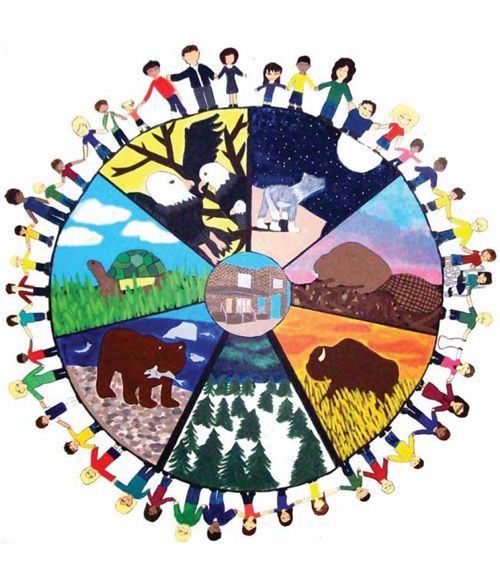- Show the illustration from the CD Teaching about Mi’kmaq Supplementary Materials p.112 We are Treaty People or use the one above. Who is in this picture? Are they happy? Are they from different groups of people? What are they doing? Are they together? What are they standing in front of?
- Make a large paper circle and divide it into four equal parts showing the elements of treaty making. Each quarter should be large enough for students to stand inside. In the four sections write the following:
- What you give, what you receive
- Showing kindness
- Showing respect
- Expressing thanks
- Have students pick which of the four aspects of treaty making they would like to speak about. Have them stand in that section of the circle.
- In turn, have students speak about what they would say if they were making a treaty in their section of the circle.
- Record their responses on chart paper or whiteboard.
- When you are finished, ask if they agree that they should behave this way forever and ever. Write down what they agree to.
- Discuss the statement “We are all Treaty People.” Is the teacher part of this treaty?
- If this is a treaty, what would you call it? How about Peace and Friendship? As a class, illustrate the circle and place it on the wall. See a Manitoba example on the environment below.





